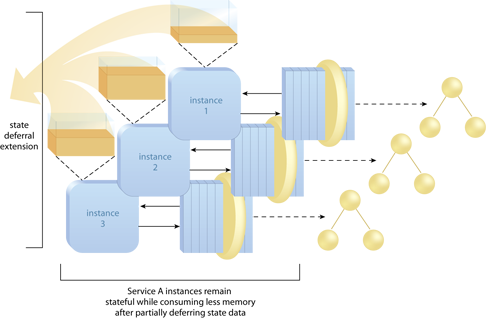SOA Patterns > Service Implementation Patterns > Partial State Deferral
Partial State Deferral (Erl)
How can services be designed to optimize resource consumption while still remaining stateful?

Problem
Service capabilities may be required to store and manage large amounts of state data, resulting in increased memory consumption and reduced scalability.
Solution
Even when services are required to remain stateful, a subset of their state data can be temporarily deferred.
Application
Various state management deferral options exist, depending on the surrounding architecture.
Impacts
Partial state management deferral can add to design complexity and bind a service to the architecture.
Principles
Architecture
Inventory, Service

Applying this pattern results in the same amount of concurrent service instances but less overall state-related memory consumption.
Related Patterns in This Catalog
Canonical Resources, Process Centralization, Service Grid, State Repository, Stateful Services
Related Patterns in Other Catalogs
Lazy Load,
Partial Acquisition
Related Service-Oriented Computing Goals
This page contains excerpts from:
SOA Design Patterns by Thomas Erl
(ISBN: 0136135161, Hardcover, Full-Color, 400+ Illustrations, 865 pages)
For more information about this book, visit www.arcitura.com/books.
